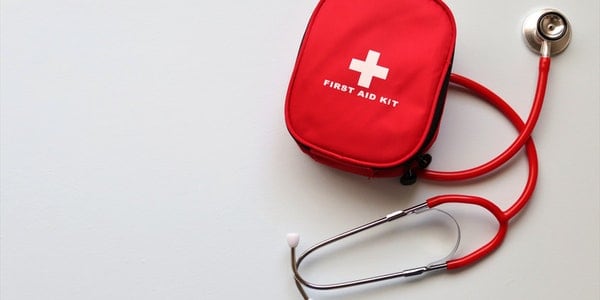The Regulation
The Health and Safety (First-Aid) Regulations requires all employers to provide adequate and appropriate first-aid equipment, facilities and personnel so employees can be given immediate attention if injured or an ambulance can be summoned if necessary. This means that at a minimum, employers should have a suitably stocked first-aid box, a first-aider or appointed person to take charge of arrangements, and information concerning first-aid arrangements for all employees. These precautions can help save lives and can prevent minor accidents and injuries from turning into major ones.
‘Adequate and appropriate’ first-aid provisions will differ workplace to workplace and will depend on specific circumstances. Employers should conduct an assessment of first-aid needs in order to determine what is adequate and appropriate for their particular workplace. This assessment should include a consideration of workplace hazards and risks, the size and nature of the workforce, history of accidents, work patterns, etc.
First Aid Materials
Every employer should provide at least one first-aid container with a sufficient quantity of suitable first-aid materials for each worksite; however more than one may be needed depending on the size of the workplace and circumstances. These containers should be marked with a white cross on a green background, easily accessible and preferably placed near hand washing facilities.
There is no mandatory list of items required by law to be in a first-aid box, employers should base contents on their assessed needs. The HSE suggests the following minimum stock for low hazard workplaces:
- HSE Leaflet: Basic Advice on First Aid at Work
- 20 individually wrapped sterile plasters (assorted sizes), appropriate to nature of work
- 2 sterile eye pads
- 4 individually wrapped triangular bandages (sterile)
- 6 safety pins
- 2 large, individually wrapped, sterile, unmedicated wound dressings
- 6 medium, individually wrapped, sterile, unmedicated wound dressings
- At least 3 pairs of disposable gloves
The above list is a suggested contents list only; each individual workplace may have different contents based on assessed needs. First-aid containers should be frequently checked and restocked, and items past their expiry date should be disposed of properly.
Personnel
Employers must also have a number of suitable persons, as is adequate and appropriate in the circumstances, for rendering first-aid to employees should the need arises. There are two main types of suitable persons, a first-aider and an appointed person. Employers should decide which to use based on their first-aid needs assessment.
A first-aider is typically someone who has completed training and holds a valid certificate of competence in either first aid at work (FAW) or emergency first aid at work (EFAW), issued by an HSE approved training organisation. Since October 2013, the requirement for the HSE to approve first aid training and qualifications in Great Britain has been removed. This means that employers are free to select a training provider that is best suited to their own specific needs. EFAW certification trains the first-aider to give emergency first aid to an injured employee. FAW certification goes further by also training the first-aider to apply first-aid to a range of specific injuries and illnesses, not just in emergency situations. Employers should consult their first-aid assessment when deciding which first-aider qualification is needed in the workplace. Also, the HSE strongly recommends all first-aiders to take annual refresher training to ensure all skills are up to date.
Employers also have the option to use an appointed person if they decide that a first-aider is not needed in the workplace. An appointed person is in charge of looking after the first-aid equipment and facilities and calling emergency services if needed. They are not required to have first-aid training or hold any certifications. Appointed persons should not attempt to give first aid in areas where they are not trained. The HSE recommends providing first-aiders even if they might not seem necessary, because there is always the possibility of an accident or illness in the workplace. Also, appointed persons are not necessary if there are an adequate number of first-aiders.
There is no specific number of first-aiders or appointed persons required in each workplace and it will depend on the circumstances of each individual workplace. However, the HSE does provide a suggested numbers chart as guidance:
| Type of Workplace | # of Employees | First-Aid Personnel |
| Low Hazard Workplaces (offices, shops, libraries) | Less than 25 | At least 1 appointed person |
| 25–50 | At least 1 first-aider (EFAW) | |
| 50 and greater | At least 1 first-aider (FAW) for every 100 employees | |
| Higher Hazard Workplaces | Less than 5 | At least 1 appointed person |
| 5–50 | At least 1 first-aider (EFAW or FAW based on possible injuries) | |
| 50 and greater | At least 1 first-aider (FAW) for every 50 employees |
Information for Employees
Employers must also inform and educate their employees of the first-aid provisions available in the workplace. Everyone in the workplace should be aware of, understand and accept the first-aid arrangements. This can be achieved by developing procedures for informing staff and employees and posting first-aid notices in prominent positions throughout the worksite. Employers should also take steps to ensure that employees with reading or language difficulties are educated as well.
For more information concerning first-aid in the workplace, click here.

